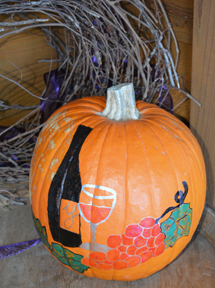
Thanksgiving recipes to try!
Over the last 11 years, we have written about Thanksgiving ideas that are also wine related. You are likely to enjoy reading some of our earlier blogs that include recipes for cocktails and recipes for Thanksgiving foods. Additional Thanksgiving recipes are available on the Wine Trail Traveler website. We also have a special Thanksgiving Day page. For the day after Thanksgiving, check out the recipe below that calls for leftover turkey.
7 Cocktails for Thanksgiving and the Holidays November 2017
Two Cocktails for Fall & Thanksgiving (using Prosecco) October 2016
Thanksgiving in Wine Country November 2015
Wine Country Roasted Turkey for Thanksgiving November 2015
The Other Bordeaux Variety for Thanksgiving November 2014
Thanksgiving Stuffing with Red Wine
Or try this recipe the day after Thanksgiving. It can be prepared with leftover turkey.
Tacchino Toscano (Tuscan Style Turkey)
Ingredients
1?2 c extra virgin olive oil
4 -5 lb dark and light turkey meat, cut into 1 by 3 inch chunks (have the butcher prepare if need be)
1?2 c pancetta, minced (sub prosciutto)
3?4 c crumbled Italian sausage, half sweet, half hot
3 c diced onions
2 c diced carrots
3 c diced celery
1?4 c minced garlic
Pinch crushed red pepper
1 1?2 T finely chopped fresh rosemary
1 1?2 T finely chopped fresh sage
3 T finely chopped Italian parsley
Salt
Freshly ground black pepper
1 c dry red wine or white wine – for recipe
8 c canned whole tomatoes, with their juice, crushed
1 lb penne or rigatoni pasta
1 c grated Parmesan cheese
1 – 6 oz. glass wine – for chef
Directions
1. Coat the bottom of a large skillet with the olive oil and heat over medium heat.
2. Add the turkey meat, pancetta and sausage and cook until the meat begins to brown.
3. Add the onions, carrots, celery, garlic, rosemary, sage and 1 1?2 teaspoons of the parsley. Season with salt and pepper to taste and cook for 10 to 15 minutes.
4. Add the wine and simmer until reduced by half.
5. Add the tomatoes to the pan with enough water to cover all the ingredients.
6. Bring to a simmer and cook the sauce for 1 1/2 hours, adding more water if needed.
7. Bring a large pot of well-salted water to a boil. Add the rigatoni and cook until very al dente, about 7-8 minutes maximum. Do not overcook! Drain, reserving 1 cup of the cooking water.
8. Add the pasta to the sauce with 1?2 c of the cooking water. Simmer 2 to 3 minutes for the pasta to absorb some of the sauce. If the mixture seems dry, add a little more pasta cooking water. Adjust the seasonings.
9. Toss and serve sprinkled with the grated Parmesan and the remaining 1 1?2 T parsley.
Serve with wine.
Provided by Stone’s Throw Winery, Baileys Harbor, Wisconsin.
Cheers!
Kathy
-1.5in.jpg)



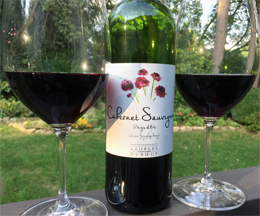
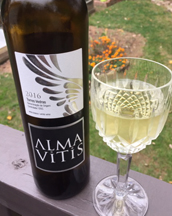
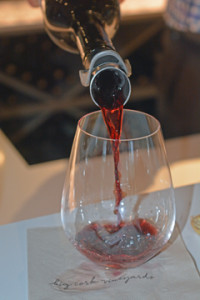
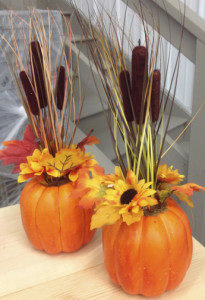
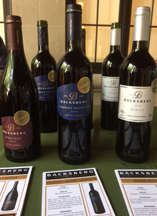
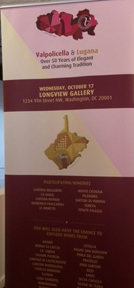
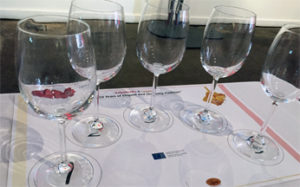
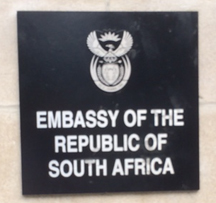

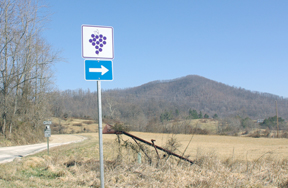
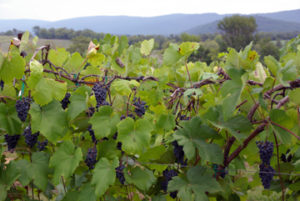
Wine Trail Traveler Presentation Events
Terry Sullivan presenting to members of The Village in Howard.
In addition to writing books, articles and blog posts, Wine Trail Traveler also conducts wine presentations. For three years one set of presentations has been for the group The Village in Howard. This TVIH group is composed of of members from Howard County, Maryland aged 55 and above. Some of the over 200 members enjoy wine. Throughout the year, Terry and Kathy conduct four presentations called “Teach & Taste.” The topic changes for each presentation as do the wines tasted.
Last Sunday, we had our November “Teach & Taste “with a topic of red varietal wines. The format for this presentation was experimental and was well received by those attending. Instead of moving furniture out of our dining room and setting up chairs, we extended the size of the dining room table and attendees sat at the table. Added to the wine focus of this event were small bites of food paired with the wines.
Each place setting included a handout with notes with a space to evaluate the wines. Also each place setting had a bottle of water, a dessert-size plate and a wine glass. There were two charcuterie trays placed on the table. As Terry went through the presentation, he stopped to pour a tasting of a wine for each. After evaluating and talking about the wine, a food item was passed out and the attendees took a sip of wine, then the bite of food followed by another sip of wine. They were asked to concentrate on two questions.
1. Does the wine enhance the food?
2. Does the food enhance the wine?
There were various comments about the wine and food pairings.
For our November “Teach & Taste” wines and food pairings sampled included:
Saperavi – Tasted with a piece of meat from charcuterie tray.
Petite Sirah – Paired with a piece of dark chocolate.
Cabernet Franc – Sampled with Kathy’s baked brie appetizer.
Tannat – Paired with a dark chocolate fudge brownie.
Malbec – Matched with a piece of pizza.
Petit Verdot – Tasted with a piece of grilled sausage.
In addition to the 1½ to 2 hour fun event, the “Teach &Taste” events includes a break so that attendees can partake of a variety of appetizers and dessert while enjoying the comaraderie of everyone.
In most cases, people noticed that the addition of food along with each wine changes perceptions. Usually the group thought the pairing of the wine and food enhanced each other. The group enjoyed this format of the teach and taste and are looking forward to our end of January presentation about the “Wines from the Romantic Danube.”
If you are interested in hosting Terry and Kathy for a wine presentation, check out their presentation page
on the Wine Trail Traveler site and contact us.
Cheers,
Terry